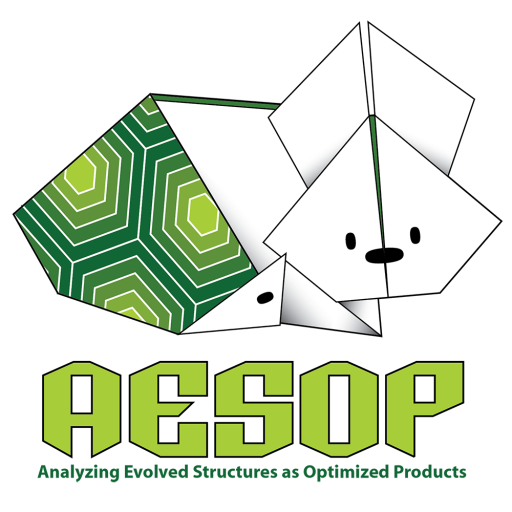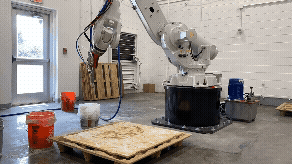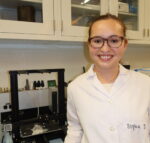







Droplets containing oligomeric liquid crystal molecules of varying chain lengths can branch into various network structures when the temperature drops. The shorter chains preferentially move to the droplet center, while longer chains move to the surface to drive the transformation.
Stimulus-responsive soft materials can enable folding of a 2D sheet into a 3D object for applications, including wearable electronics, biomimetic machines, soft robotics, drug delivery, biomedical devices, and responsive buildings.
A smart window made from a clear silicone sheet infused with silica nanoparticles can become opaque and colored when mechanically stretched.
Inspired by cephalopod’s skin for camouflage, we create an inflatable, thin membranes made from cholesteric liquid crystal elastomers that can change colors instantly and on demand.
Meter-long Liquid crystal elastomer (LCE) composite filaments consisting of cellulose nanocrystals (CNCs) and carbon nanotubes (CNTs) can be applied in soft robotics as fast and forceful actuators upon exposure to infrared light and electrical fields.
Hydrogel made from polyhydroxyethylmethacrylate (PHEMA) has unusual adhesive properties akin to that of the snail’s epiphragm: it fastens securely to the surface like super glue in the dry state, but slips off effortlessly when wetted.
Wearable sensors allow for continuous and real-time monitoring of the human health and potential environmental hazards such as ultraviolet (UV) radiation on the daily basis.
By prescribing director fields of liquid crystal mesogens in a 2D sheet, we can program their transformation into various 3D shapes, such as a human face, with heat.
About
We are interested in developing novel materials synthesis, assembly and eco-manufacturing of complex, multi-functional, nano- to macrostructured soft, sustainable materials and composites. By coupling chemistry, fabrication and external stimuli, the Yang lab addresses the fundamental questions at surface-interface in precisely controlled and sometimes extreme environments, and study environmental responsiveness and the related structure-property relationship. Special interests involve novel design, synthesis and engineering of well-defined polymers, gels, colloidal particles, liquid crystals, and organic-inorganic hybrids with controlled size, shape, and morphology over multiple length scales, and investigate dynamic responses, mechanical instabilities, and structural evolution in soft and geometric substrates. By directed patterning and assembly of nano- and micro-objects in solutions and on patterned surfaces, we explore unique surface, optical, and mechanical properties and their dynamic tuning.
Research
The Yang lab is uniquely at the intersection of multi-materials synthesis, nano-/microfabrication, and device processing backed by depth in understanding of physical, mechanical and biological principles. Her lab addresses the fundamental questions centered around surface/interface, actuation mechanisms, and structure-property relationship.
Through directed assembly of oligomers, polymers, gels, colloids, liquid crystals, amphiphiles, and their composites with inorganic materials (e.g. concrete) and biomolecules across nano- to macroscales, the Yang lab creates complex, multi-functional nano- and microstructures with unique surface, optical, and mechanical properties for potential applications, including coatings, adhesives, smart windows, displays, sensors, soft robotics, biomedical devices, dehumidifiers, and carbon absorbing concrete for a better future.
Center for Analyzing Evolved Structures as Optimized Products (AESOP): Science and engineering for the human habitat
 NSF NRT: Climate Action and Resilience for Extreme Urban Heat (CLIMATE-CARE)
NSF NRT: Climate Action and Resilience for Extreme Urban Heat (CLIMATE-CARE)






